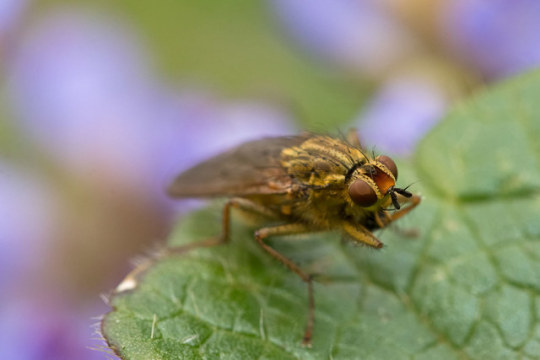#Calyptratae
Explore tagged Tumblr posts
Text


Photo 1 - Ephydridae sp. / Photo 2 - Calyptratae sp.
Unidentified drain flies.
17/09/23 - Schizophora spp.
QLD:BRB - Townsville, suburban drainage ditch
#Arthropods#Arthropoda#insects#insecta#insect#insectblr#insects tw#bugs#bugblr#bugs tw#bug#entomology#invertblr#invertebrates#Schizophora#Calyptrate Flies#Calyptratae#Shore Flies#Ephydroidea#Brachycera#Brachyceran Flies#Diptera#flies#unidentified
8 notes
·
View notes
Text
As people feel the urge to pack their bags and head off on a journey, they may be unaware of the benefits of the suitcase they are using. Though one might not consider them living creatures, suitcases are in fact a small piece of a larger organism. Suitcases are part of the Schizophora family, which is a subsection of the order Diptera, specifically the Calyptratae. Without knowing it, travelers are relying on these tiny creatures to help them travel safely and conveniently.
Calyptratae are an important part of the advanced aerial capability of Diptera. These organisms are highly evolved and specialized for flight, since they have developed faces and wings adapted to important parameters of aerodynamics. The cup-shaped structures seen on the fronts and backs of suitcases actually seems to imitate these structures. These cup-like structures are called calypta and they are thought to act like air-brakes or fly-wings that offer increased stability when traveling long distances.
The calypta on suitcases also help reduce the overall weight of the bag while increasing the surface area and thus reducing consumption of space. It is also believed that the structured surfaces on suitcases help to retain integrity even under high speeds and heavy loads. This ensures that all the essential items remain safe and secure.
Calyptratae are a great example of natural structures being adapted for the modern world. These organisms have developed an efficient means of travel that travelers can use to their benefit. As travelers, it is important to be aware of the advances of nature and how they can help make our journeys easier and safer.
1 note
·
View note
Text
Descoberta espécie de mosca gigante com 34 milhões de anos
Descoberta mosca gigante pré-histórica preservada em âmbar. Pesquisadores anunciam a identificação de uma espécie extinta pertencente ao grupo Calyptratae, importante para a polinização e pouco conhecido pela ciência Uma emocionante descoberta na área da paleontologia acaba de ser revelada por uma equipe de pesquisadores. Trata-se do fóssil de uma espécie de mosca gigante, até então…

View On WordPress
0 notes
Photo

Tachinid fly (Cylindromyia brassicaria)
Photo by Lukasz Prajzner
#fly#cylindromyia brassicaria#cylindromyia#cylindromyiini#phasiinae#tachinidae#oestroidea#calyptratae#schizophora#cyclorrhapha#eremoneura#muscomorpha#brachycera#diptera#antliophora#panorpida#endopterygota#eumetabola#neoptera#insecta#hexapoda#pancrustacea#arthropoda#panarthropoda#ecdysozoa
17 notes
·
View notes
Photo

Golden dung fly (Scathophaga stercoraria) (via USFWS - Pacific Region)
Photo credit: Peter Pearsall/USFWS
#Golden Dung Fly#Scathophaga stercoraria#Scathophaga#Scathophaginae#Scathophagidae#Muscoidea#Calyptratae#Diptera#Insecta#Hexapoda#Arthropoda#insects#fly
17 notes
·
View notes
Text

Schismatoglottis calyptrata
29 notes
·
View notes
Link
0 notes
Photo

Calyptratae is a subsection of Schizophora in the insect order Diptera, commonly referred to as the calyptrate muscoids (or simply calyptrates). It consists of those flies which possess a calypter that covers the halteres, among which are some of the most familiar of all flies, such as the house fly. (at Arlington, Virginia) https://www.instagram.com/p/Cct3mc1s5RwQ67rs_l4m-is0HmBN1GJG9HUvc40/?igshid=NGJjMDIxMWI=
0 notes
Text
Botfly Removal Compilation - Cat, Rabbit, Squirrel and Gorilla
Botfly Removal Compilation - Cat, Rabbit, Squirrel and Gorilla Botfly Scientific Name: Oestridae Botfly Kingdom: Animalia Botfly Phylum: Euarthropoda Botfly Class: Insecta Botfly Order: Diptera Botfly Section: Schizophora Botfly Subsection: Calyptratae Botfly Superfamily: Oestroidea Botfly Family: Oestridae #botfly #botflyremoval #compilation Watch video on YouTube: https://youtu.be/hf0kas0xgyk
0 notes
Photo


I’m not very good at identifying flies...
The closest ID I could find, is that this fly may be apart of the Senostoma genus (perhaps Senostoma longipes, or Senostoma punctipenne).
30/11/21
#Senostoma#Unidentified#flies#diptera#Dexiini#Dexiinae#Tachinidae#Oestroidea#Calyptratae#Schizophora#Cyclorrhapha#Brachycera#bugs#bugblr#bugs tw#bug#insects#insecta#insectblr#insects tw#insect#entomology
23 notes
·
View notes
Text
New fly fossil sheds light on the explosive radiation of flies during the Cenozoic Era
The first unambiguous fossil from the botfly family adds to the few known fossils of a major clade of flies (Calyptratae), shedding light on their rapid radiation during the Cenozoic Era, according to a new study. from Nature's Incredible! http://ift.tt/2woB7q9 via Nature & Insects
0 notes
Text
New fly fossil sheds light on the explosive radiation of flies during the Cenozoic Era
The first unambiguous fossil from the botfly family adds to the few known fossils of a major clade of flies (Calyptratae), shedding light on their rapid radiation during the Cenozoic Era, according to a new study. Latest Science News -- ScienceDaily https://www.sciencedaily.com/releases/2017/08/170823140700.htm
0 notes
Photo

Botfly (Cuterebra sp.)
Photo by Gil Wizen
#unidentifiable#juvenile#rodent botfly#botfly#cuterebra#cuterebrinae#oestridae#oestroidea#calyptratae#schizophora#cyclorrhapha#eremoneura#muscomorpha#brachycera#diptera#antliophora#panorpida#endopterygota#eumetabola#neoptera#insecta#hexapoda#pancrustacea#arthropoda#panarthropoda#ecdysozoa#beautiful species
61 notes
·
View notes
Photo

Lucilia eximia (via Insects Unlocked)
USA, TX, Travis Co., NW Hills Subdivision
A public domain image by Ken Perry, produced by the University of Texas at Austin's "Insects Unlocked" project.
#Lucilia eximia#Lucilia#Calliphoridae#Oestroidea#Calyptratae#Diptera#Insecta#Hexapoda#Arthropoda#fly#insects#Texas
12 notes
·
View notes
Photo

Tachinid fly (Tachinidae)
Photo by Chien Lee
#hedgehog fly#tachinid fly#tachinidae#oestroidea#calyptratae#schizophora#cyclorrhapha#eremoneura#muscomorpha#brachycera#diptera#antliophora#panorpida#endopterygota#eumetabola#neoptera#insecta#hexapoda#pancrustacea#arthropoda#panarthropoda#ecdysozoa#fave
13 notes
·
View notes
Photo

Giant tachinid fly (Tachina grossa)
Photo by Alexey Sergeev
#giant tachinid fly#tachinid fly#fly#tachina grossa#tachina (subgenus)#tachina (genus)#tachinini#tachininae#tachinidae#oestroidea#calyptratae#schizophora#cyclorrhapha#eremoneura#muscomorpha#brachycera#diptera#antliophora#panorpida#endopterygota#eumetabola#neoptera#insecta#hexapoda#pancrustacea#arthropoda#panarthropoda#ecdysozoa
2 notes
·
View notes